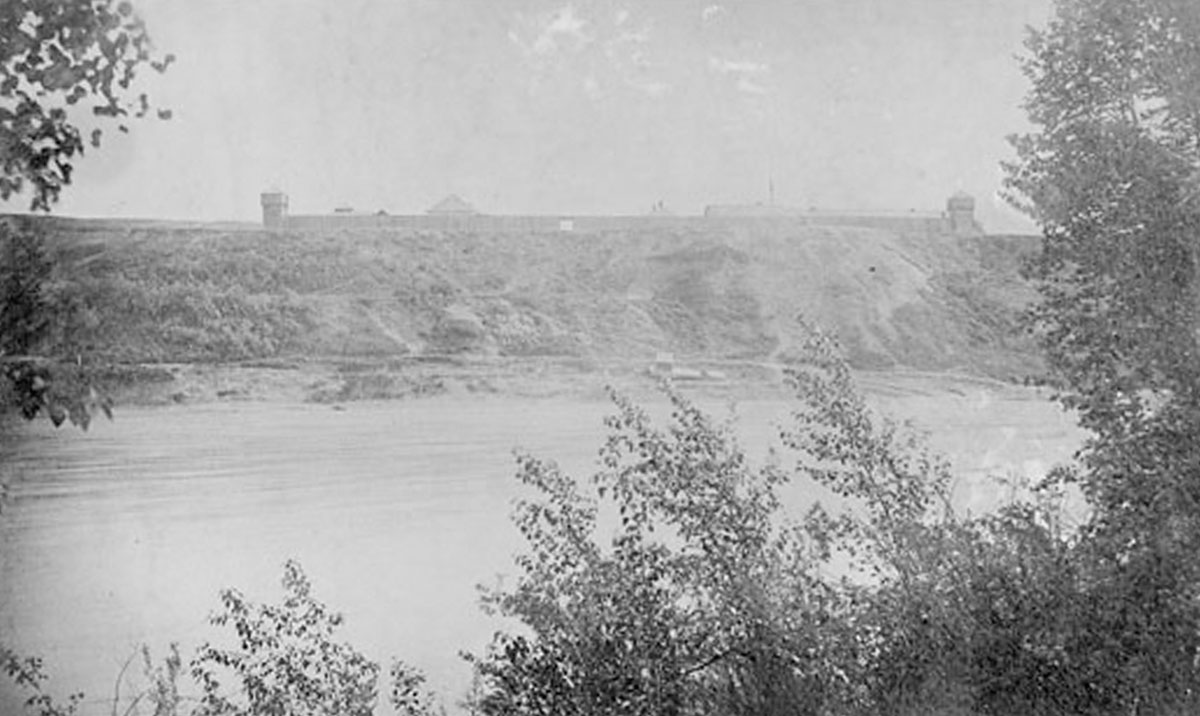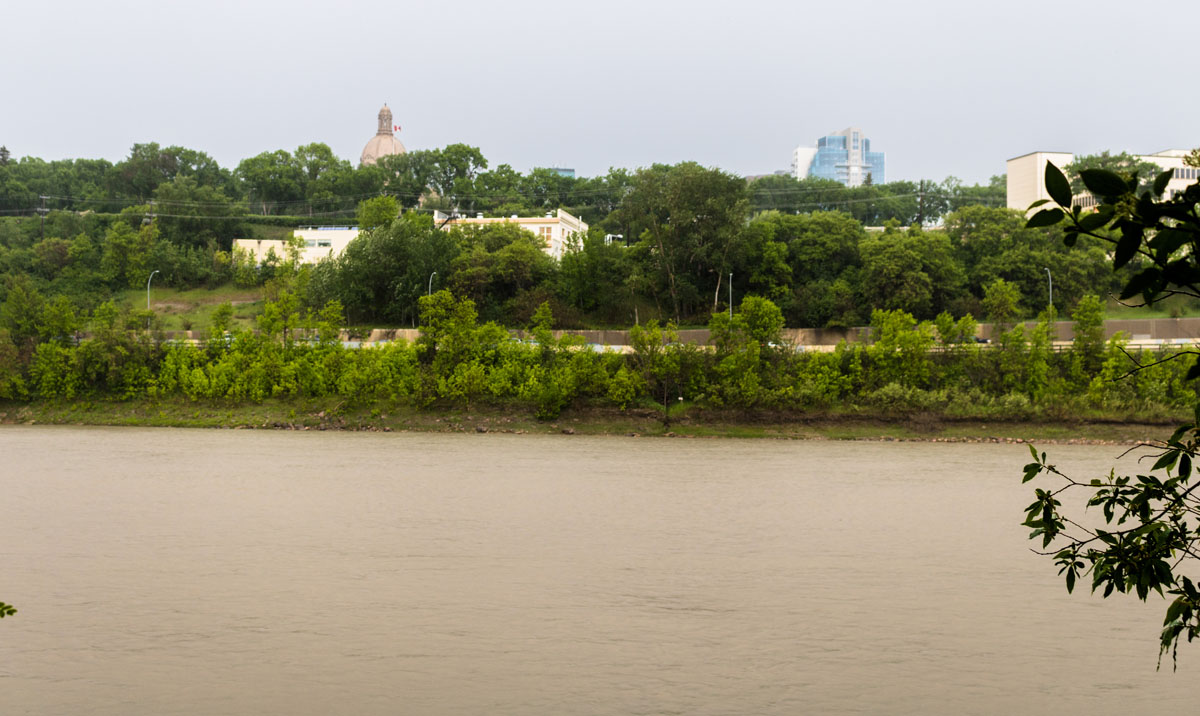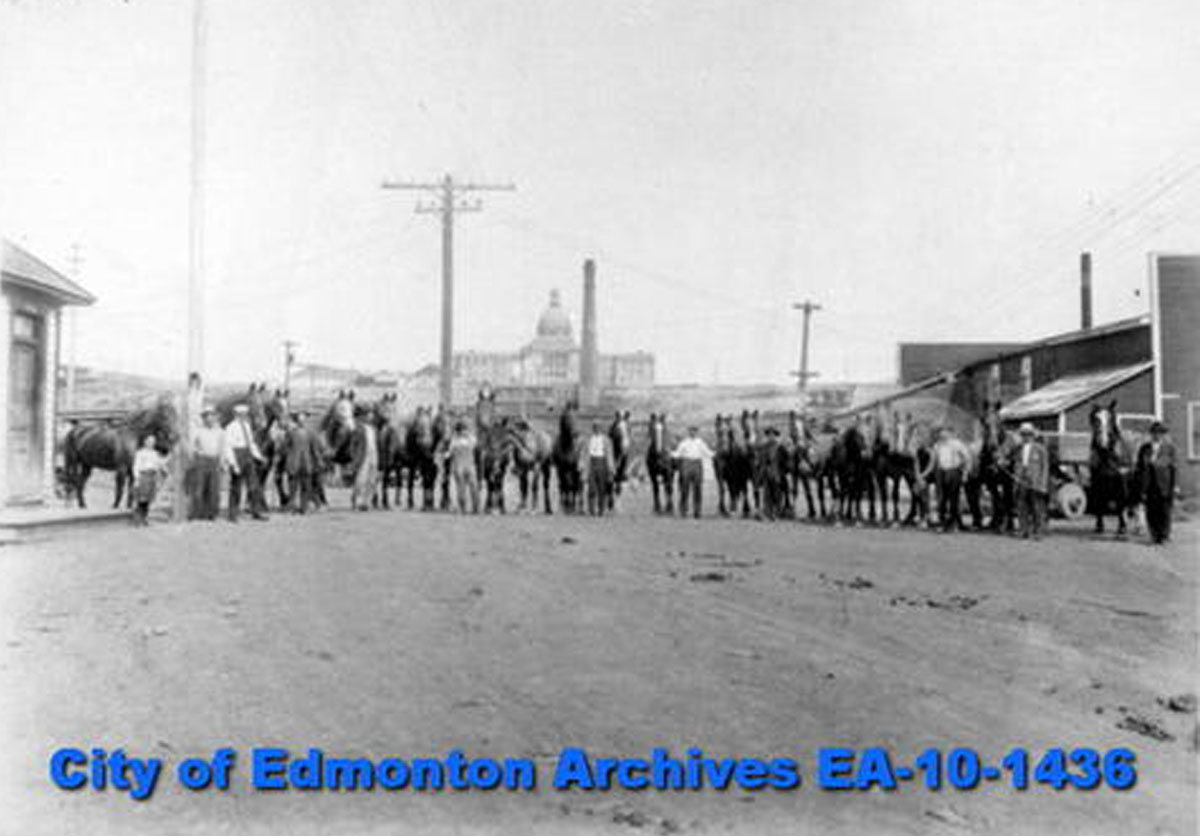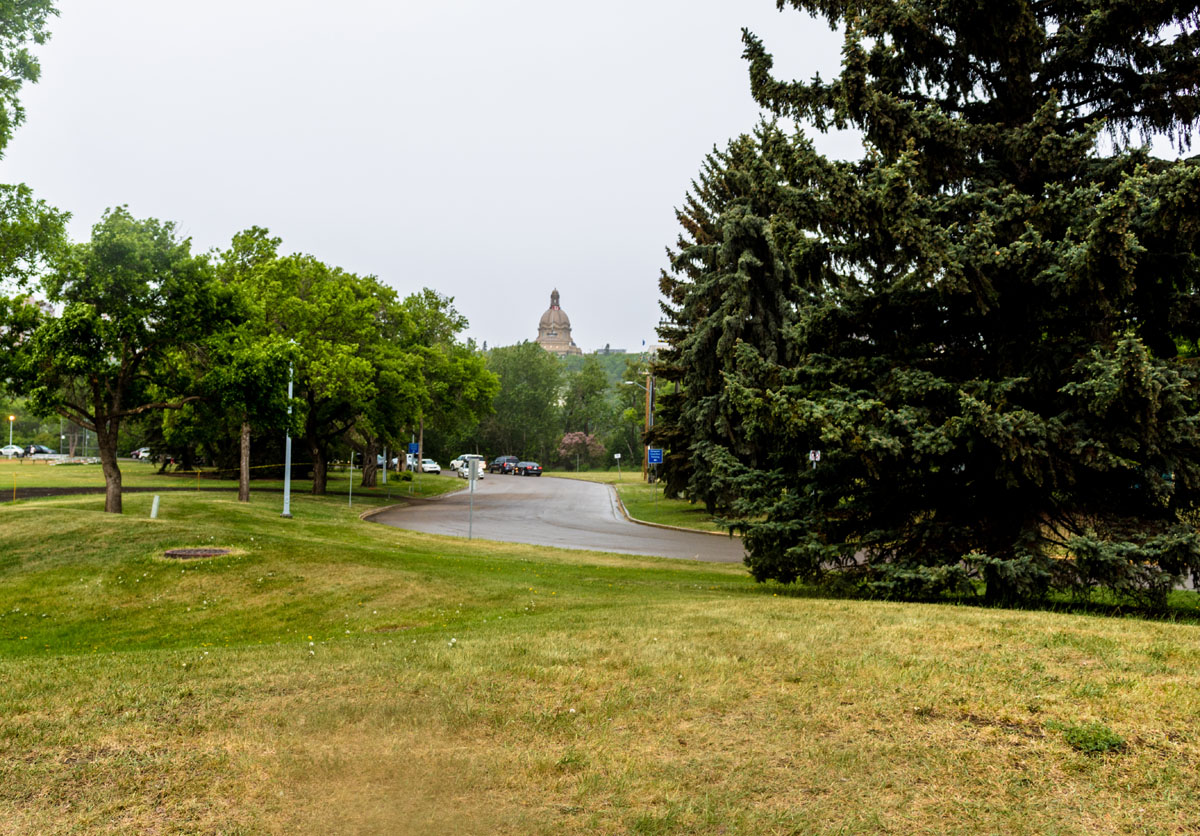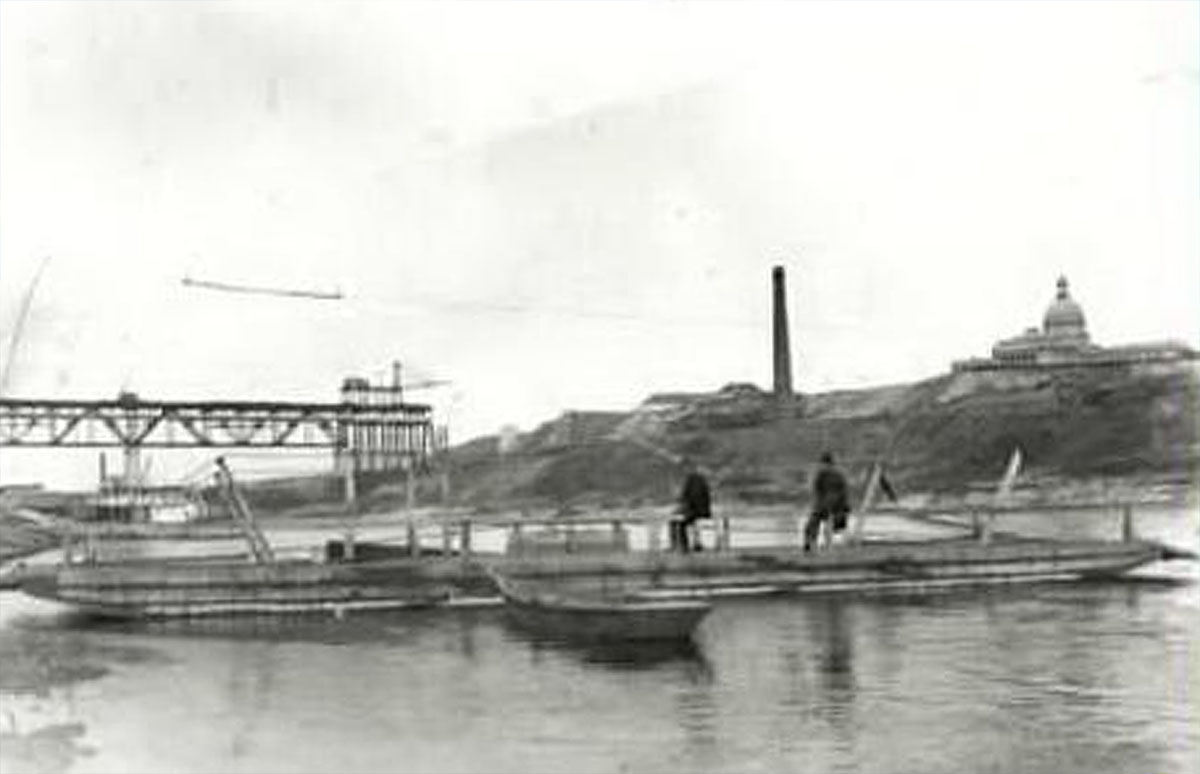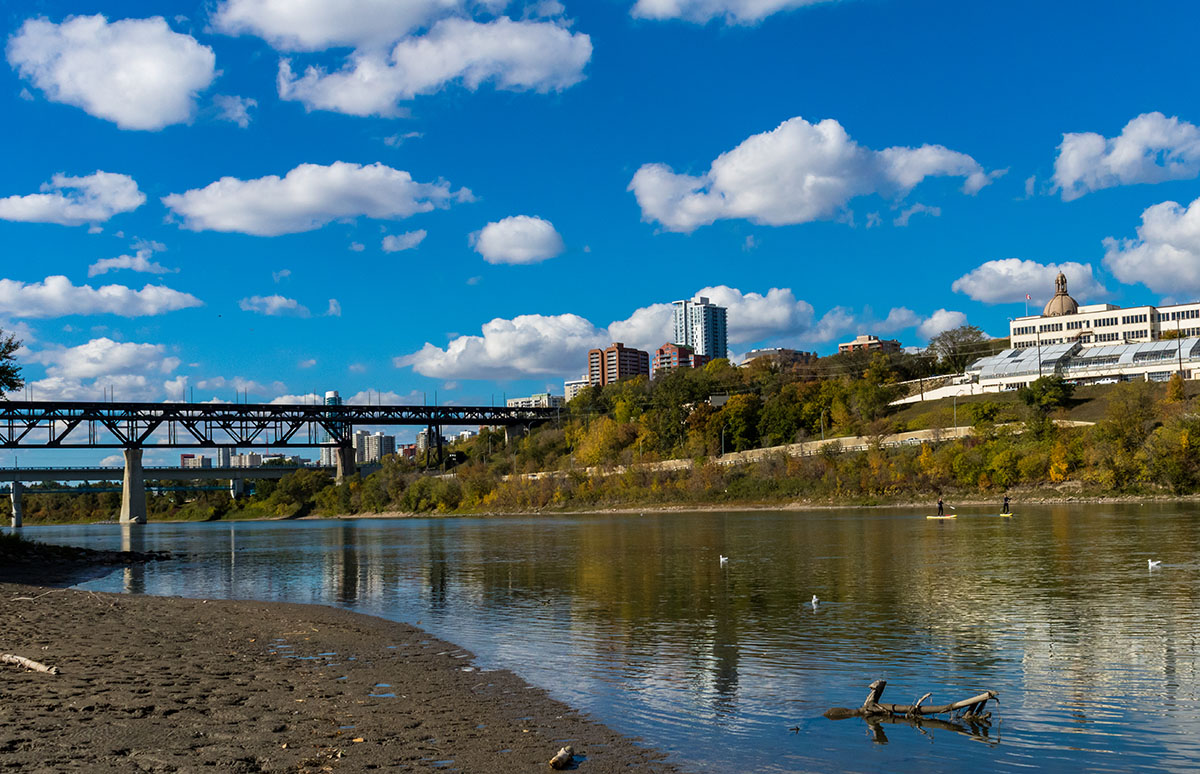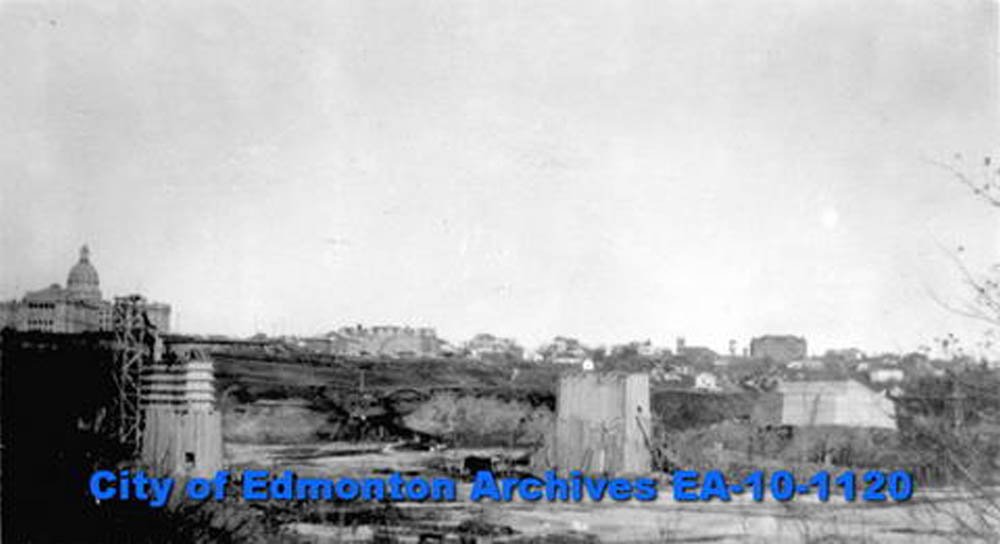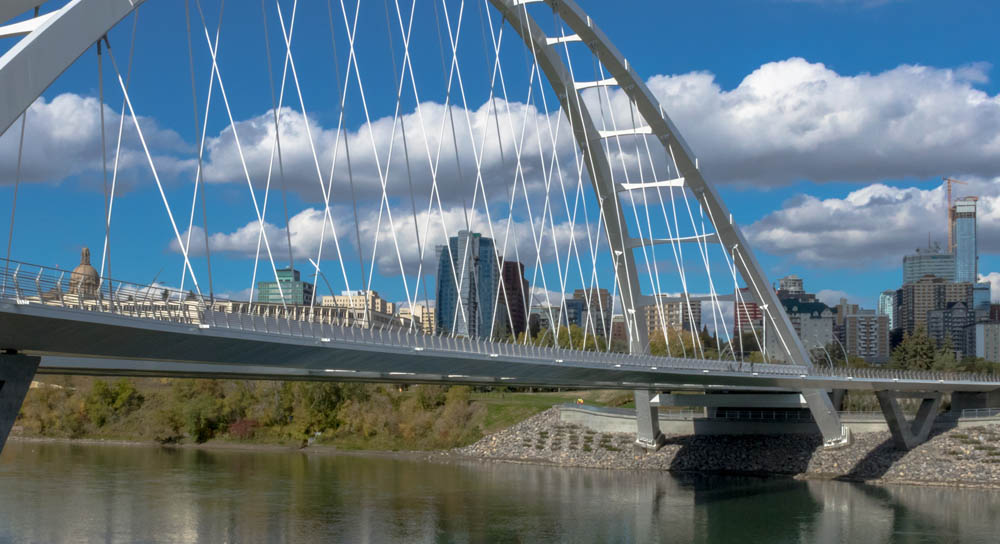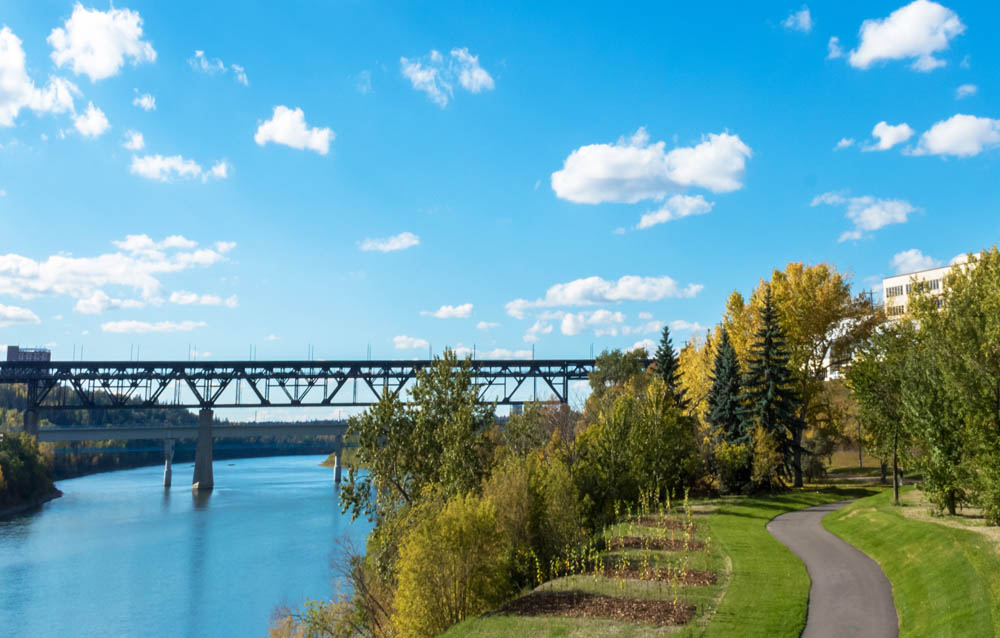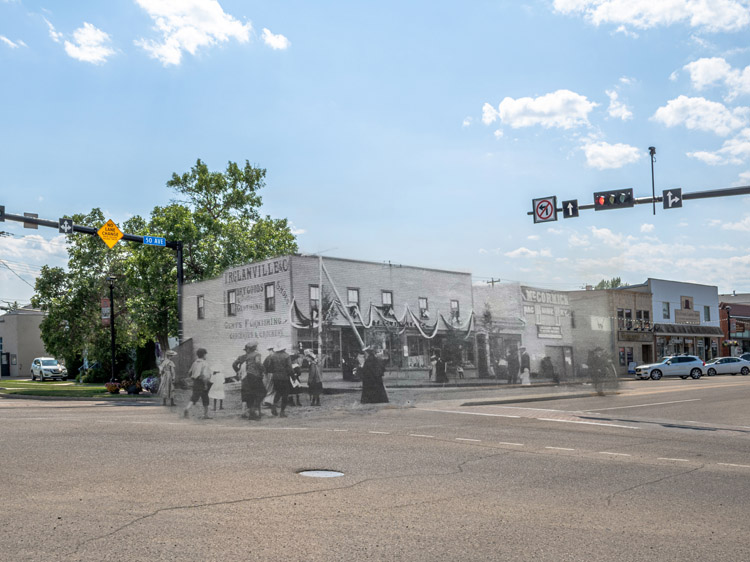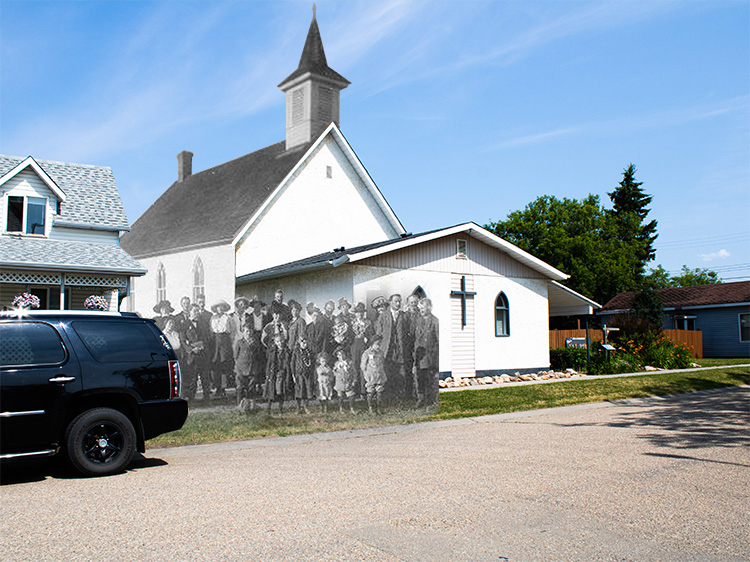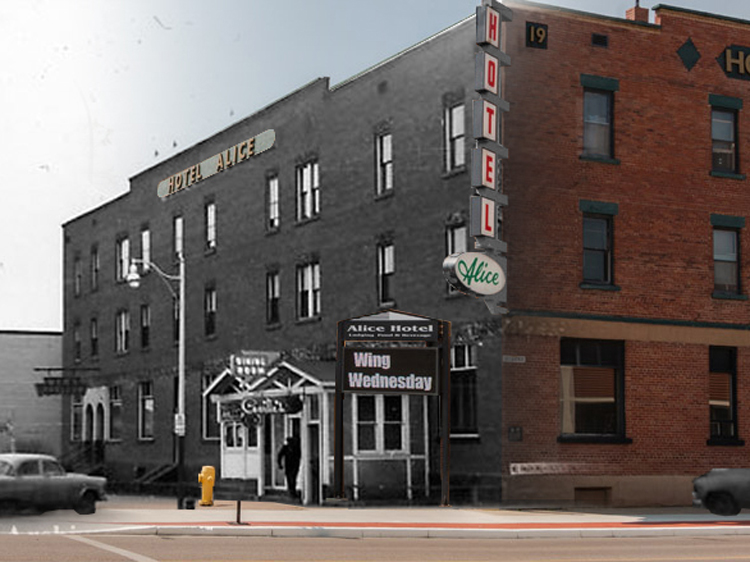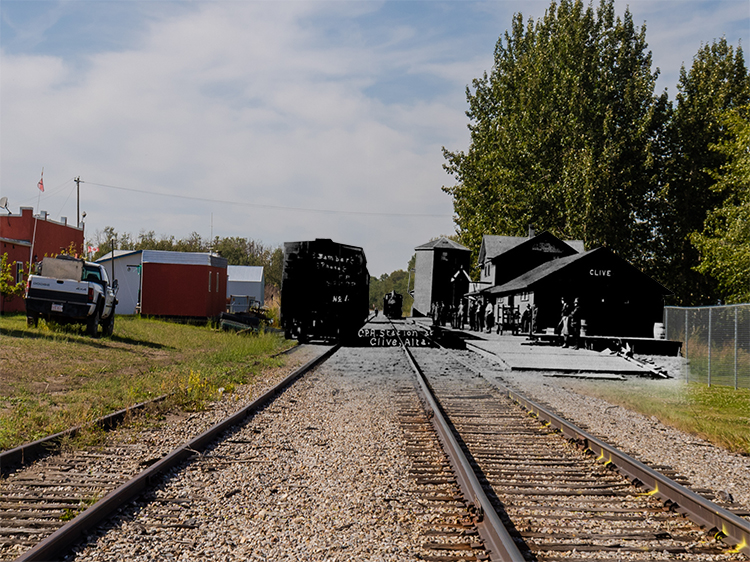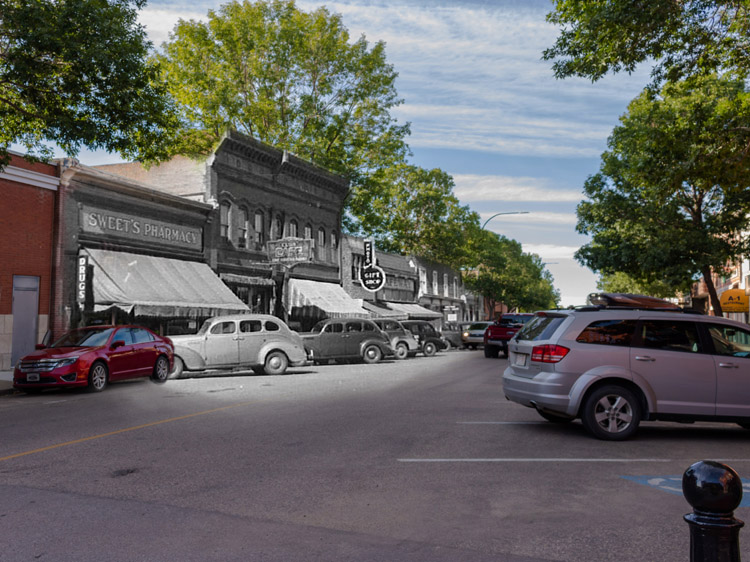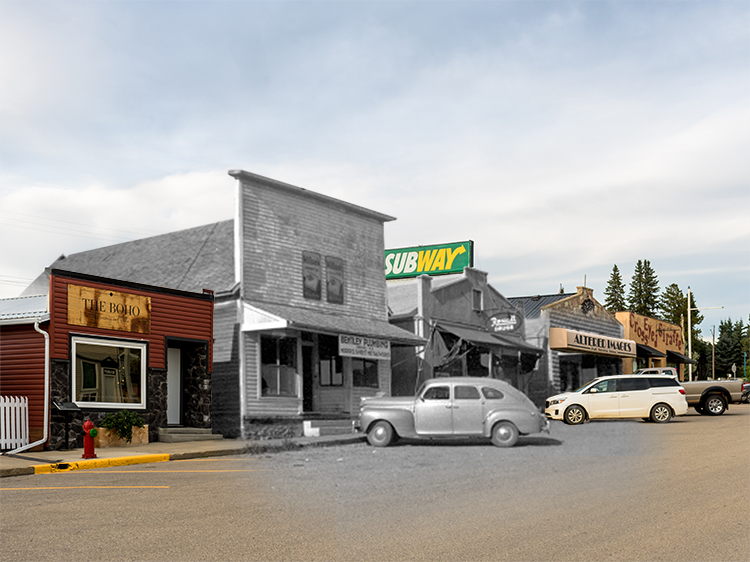Walking Tour
John Walter
Edmonton's Business Entrepreneur
Elyse Abma-Bouma, Alexa Dagan
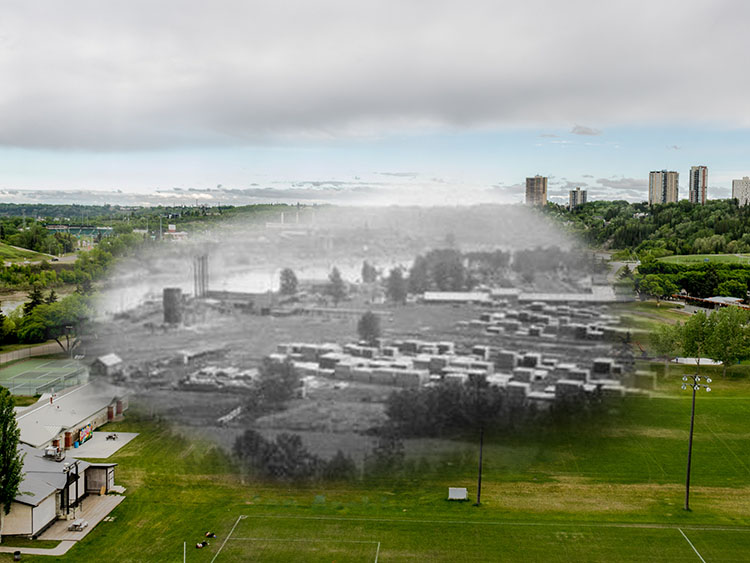
In the 1870s, Fort Edmonton was poised on the precipice of great change. The far-reaching Hudson's Bay Company had just sold the vast tract of territory known as Rupert's land to the British Crown, representatives of the Plains First Nations were poised to reluctantly surrender their traditional lands under the terms of Treaty 6, and one of Edmonton's most important figures had just set foot in the fort upon which he would leave an unforgettable mark.
This is the story of John Walter. A genial, enterprising Orcadian, from Scotland's Orkney Islands, who was one of many who helped take Fort Edmonton from its adventurous, fur trading infancy into Alberta's foremost city,through sheer skill, determination, and entrepreneurial spirit. But, it is also the story of those who laboured, traded, settled, lived and died, on the Western frontier, and of those who were forced to make way for them to do so.
This mini-tour follows the southern banks of the North Saskatchewan, where we will learn about Edmonton’s fur trading past and visit the former site of Walter's Yard and learn about his journey from boatbuilder to business owner. Then we cross 105th Street where we reflect on a streak of misfortune that threatened Walter's business, and on the destruction of an important gravesite situated right across the river from Walter's Yard. Finally we cross the Walterdale Bridge for a view of the Alberta legislature to discover how Walter, and many others, helped Edmonton become Alberta’s capital.
This project is a partnership with the City of Edmonton.
1. The Fort
Library and Archives Canada 3492430
1887
On Christmas Eve 1869, a party of bedraggled and exhausted men stumbled into the fort you see across the river. Five months before they had left Scotland and begun a gruelling journey across the Atlantic, and then across Canada, travelling by ship, ox cart, and dog train. One of those men was 21-year-old John Walter, a man who had come to the right place to find his destiny.
* * *
"This is a prominent place; has been on the map of Britain's empire for scores of years, has been a "station" in the Minutes of a large Conference for a long time. Are there any hotels? None. Are there any churches? One, a Roman Catholic. How many stores? One, the Hudson's Bay Company. What is the population? From twenty to one hundred and fifty; and in tones of bitter disappointment the sad traveler turns away with the despairing comment: "And this is the end of it all?"1
The North Saskatchewan River bisected the Canadian prairies, and had long served as a highway and source of food for the nomadic and semi-nomadic bands of First Nations peoples who lived along its course. Rossdale in particular was a popular gathering place for many different bands who came to dry pemmican for trade, socialize with their kin, and engage in religious rituals.
Into this milieu stepped caucasian fur traders of the Hudson's Bay Company who sought to fill the insatiable demand for fur amongst Europe's fashionable classes. Fort Edmonton became their base. A witness described it:
"That post lived and stood and had its being in the collecting and shipping of furs. A large annual output of the skins and furs of many animals was its highest ambition. Towards this goal, men and dogs and horses and oxen pulled and strained and starved. For this purpose isolation and hardship, almost inconceivable were undergone…. Thirteen different peoples, speaking eight distinct languages, made this post their periodic centre. This was the halfway house in crossing the continent. Hundreds of miles of wildness and isolation were on either hand. About midway between and two thousand feet above two great oceans - unique, significant, and alone, without telegraph or postal communication..."2
The only way the HBC could make it worthwhile to go through the expense of sending someone here from Europe, was by hiring them on five year contracts. John Walter was one of those who signed on for this great adventure.
2. Who was John Walter?
1914
John Walter's career with the Hudson's Bay Company (HBC) began as a boat-builder, but after a couple decades of hard work and willpower he had diversified into lumber mills, mining, business, and even operated the settlement's ferry. This photo features John's self-titled Walter Yard, where most of his businesses were based, and several of the lumber mill workers who Walter employed.
Today several of John Walter's original homes survive and have become the John Walter Museum. You will walk through the museum on the way to the next stop. Be sure to stop in!
* * *
Walter had a genial presence. A photo of Walter, taken when he was in his 30s, shows a broad-shouldered, strong man with a prodigious, light-coloured beard. The impressiveness of his facial hair was off-set by a receding hairline, and a round, friendly face with clear, light-coloured eyes. 1 2
His build was well-suited to life in Fort Edmonton where he started work repairing the massive York boats the HBC used to transport goods along the continent's riverine highway network. The York boats, a specialty of the Orkney men, were derived from the longships their Viking ancestors used for raiding, trade, and exploration. Sturdier and more versatile than the canoes favoured early in the fur trade, the York boats could also carry up to triple the payload.2
It wasn't long before John's impressive carpentry skills came in handy in constructing McDouglas Church. John began to make friends that would stay with him for the majority of his life. When his five year contract with the HBC began, the HBC era had already come to a close. The fur trade was all but tapped out, and growing settlement was inching further west all the time. Seeing the writing on the wall, the same year Walter arrived the HBC transferred the territory it controlled back to the British crown. As the HBC operations wound down in the 1870s, John started building scows on his own terms, under his own name. His boat-building business had begun.
3. The Ferry
1912
Just as John Walter's skill as a boatbuilder naturally dovetailed into the construction and lumber businesses, his affinity for watercraft led him to run a cable ferry across the North Saskatchewan River. The ferry was a vital asset to the community. While more time-consuming than crossing the bridge (carts could only be taken across one at a time), the cable ferry was reliable and popular. This photo shows John Walter's ferry in its last year of operation,tThe half-finished High Level bridge looms in the background, symbolizing the end of one era and the beginning of another.
* * *
Walter's ferry suited the needs of the little community, but due in part to Walter's efforts, the community was quickly outgrowing its capacity. The Low Level Bridge had been constructed in 1900, but didn't fully replace the need for the ferry. Edmonton needed a bridge to Strathcona. The High-Level Bridge was tough steel and above the high flood line. When it was completed in 1913 it finally put Walter's ferry out of business. The Edmonton Bulletin remarked nostalgically:
"The old landmarks of Edmonton are gradually passing away. This week the ferry service which has been supplied by John Walter Lumber Co. Limited for over thirty years, was discontinued for the winter, the old scow being taken out of the river preparatory to the freeze-up. The ferry service, it is expected, will be a thing of the past."1
Walter wasn't bitter about the occasion, telling the Edmonton Journal “we took the scow out of the river and I hope to never use it again.”2
He had come a long way from repairing boats in the HBC days and in 1900, Walter's workshops built two river steamers, theStrathcona (rechristened the Scona) and the City of Edmonton. They hauled freight and passengers along a 200-mile stretch of the river, providing an essential service to the frontier’s early settlements. On weekends and holidays in summer, they also offered wildly popular holiday excursions that were remembered fondly by people living in Edmonton in those days.
4. Experiencing Disaster
1912
The first fifteen years of the 20th century brought dramatic change to the settlement on the south side of the river. It was now known as Walterdale, after its founder, and it was connected to the rest of Edmonton by three newly constructed bridges, such as the Walterdale Bridge featured in this photo. However, even as Walterdale was flourishing, its founder found himself beset by a series of catastrophes from which his business would never fully recover.
* * *
However, Walter's life did not entirely revolve around his business. In October 1886, John Walter had married Annie Elizabeth Newby, an Englishwoman who came to Canada employed as a nanny. They had two sons, John William Walter and Stanley Walter, and he even lived to see the birth of one grandson. Meanwhile, John Walter was deeply involved in community engagement and politics, as an Alderman for Strathcona, by serving on various community boards and even contributing to the eventual amalgamation of Edmonton and Strathcona. A fair employer, family man, and philanthropist, upon his death in December 1920, The Edmonton Bulletin praised him as someone who “lived and died without an enemy."1
However, the ascent of John Walter and the growing city of Edmonton was not achieved without cost. The site on which Walter Yard was constructed was once an important site for local First Nations. After the signing of Treaty 6, that land became the property of the Federal government. Since time immemorial, the Cree, Blackfoot, Ktunaxa, Metis, Nakota Sioux, Iroquois, Dene, Saulteaux, Assiniboine, and many others used this land as they followed the herds of bison across the prairie.1 2
Directly across the river from Walter's Yard was the site of the community's cemetery. In use from probably around the 1830s, the Fort Edmonton Cemetery was the site of both settler and traditional First Nations graves. In the late 1800s, the cemetery was abandoned due to its location on a flood plain. Some graves were exhumed and relocated to a new site, but few Indigenous ones were relocated. As the 20th century progressed, the site was disturbed in construction efforts on more than one occasion. During the construction of Rossdale Road, several graves were destroyed and the remains were subsequently collected by the University of Alberta.
The construction occurred despite the protests of some locals who were aware of the cemetery site. The act was another knife in the colonial wound of the First Peoples who had once used this land before being relocated to the Papaschase Reserve near Mill Woods on the south side of Edmonton. Even that reserve they were forced to abandon a few years later. The modern band is keenly aware of this loss, as well as the disturbance of the graves of their ancestors.
After a reconciliation ceremony, some of the remains were reinterred in a new site, and a memorial was installed in the early 2000s to commemorate the final resting place. After you cross the bridge to the next stop on this tour and proceed north towards the intersection of River Valley Road, look to your right and you will see the memorial. Take the time to stop and read the plaques.
5. Capital of Alberta
1846
Paul Kane, a Canadian painter famous for his depictions of the west, created picture this in 1846. The Fort sits above Rossdale Flats, where a cluster of teepees sit in the shadow of the community that would eventually grow to displace them. Now, Alberta's legislature building stands atop the same hill as the old fort once did.
As you are walking to this stop you will walk by the Traditional Burial Grounds of Fort Edmonton and the memorial recently constructed there. There are a series of information boards that are well worth reading. It is located on your right, beside the powerplant at the intersection of 105 St. and River Valley Road.
* * *
In 1905, Alberta and Saskatchewan, previously part of the massive North-West Territories, became fully-fledged provinces in their own right. The borders of the new province of Alberta put Edmonton in a central location for rail transport. The new province needed a capital and Edmonton was chosen with little contention. The small city with a population of about 8,300 had become known as the 'Gateway to the North.'1
However, if Edmonton was chosen as Alberta's capital, it was due to the work of several individuals, including John Walter, who built it up to become worthy of the title. Walter died in hospital after an operation for appendicitis, but not before he left his impressive legacy on the town he helped build and on the people who loved him. The Strathcona Evening Chronicle wrote: "There is no more progressive and public spirited citizen than John Walter. All in all he has probably done more for the city than another of its residents."2
John Walter represents the spirit of his time, and of the province he helped build. His story is one of an immigrant who came to a new land and built his own fortune from the ground up, all while using that success to guarantee the growth of the community around him. The Walterdale bridge and the neighborhood of Walterdale all carry his name.
However important it is to remember John Walter and his legacy, he is only one of several who contributed to the growth of what would become Alberta's foremost city. The fort was built by British, French, Métis, and First Nations fur traders. The land needed to support the growing fort was surrendered by First Nations groups struggling for agency in a situation where they were being crowded and starved out of their traditional ways of life. Edmonton was made possible by effort and by sacrifice. The cemetery memorial that stands steps away from this spot, lists the known names of those whose lives built Edmonton.
Endnotes
1. The Fort
1. Brock Silversides, Fort de Prairies: The Story of Fort Edmonton (Surrey, BC: Heritage House Publishing Company Ltd., 2005). 49.
2. Silverside, 49.
2. Who was John Walter?
1. John Walter, 1886. EA-10-1696, online.
2. City of Edmonton, "John Walter Biography," online.
3. BC History, "York Boat," 2016, online.
3. The Ferry
1. The Edmonton Bulletin, November 1, 1913 (Morning Edition), Page 1, online.
2. City of Edmonton, "John Walter Biography," online.
4. Experiencing Disaster
1. Peggy Donnelly, "John Walter: One of the Makers of Edmonton," RETROactive, Oct. 11, 2017. Online.
2. Agnieszka Matejko "Historic burial ground deserves a more fitting tribute," VUE Weekly, Feb. 7, 2008. Online.
5. Capital of Alberta
1. John Tattrie, "Alberta and Confederation" The Canadian Encyclopedia, January 22, 2015, online.
2. City of Edmonton, "John Walter Biography," online.
Bibliography
City of Edmonton. "John Walter Biography." https://www.edmonton.ca/attractions_events/john_walter_museums/john-walter-bio.aspx
Donnelly, Peggy. "John Walter: One of the Makers of Edmonton," RETROactive, Oct. 11, 2017.
The Edmonton Bulletin, November 1, 1913 (Morning Edition), Page 1 http://peel.library.ualberta.ca/newspapers/
HBC History. "York Boat," 2016. http://www.hbcheritage.ca/things/technology/the-york-boat
Matejko, Agnieszka. "Historic burial ground deserves a more fitting tribute," VUE Weekly, Feb. 7, 2008. https://www.vueweekly.com/historic_burial_ground_deserves_a_more_fitting_tribute/
Silversides, Brock .Fort de Prairies: The Story of Fort Edmonton. Surrey, BC: Heritage House Publishing Company Ltd., 2005.
Tattrie, John. "Alberta and Confederation" The Canadian Encyclopedia, January 22, 2015. https://www.thecanadianencyclopedia.ca/en/article/alberta-and-confederatio




